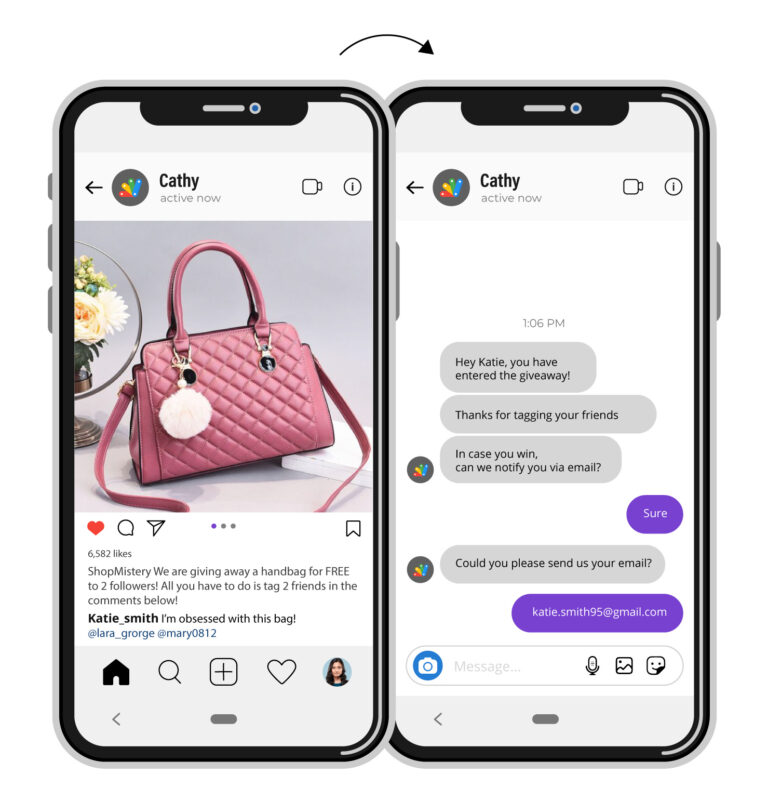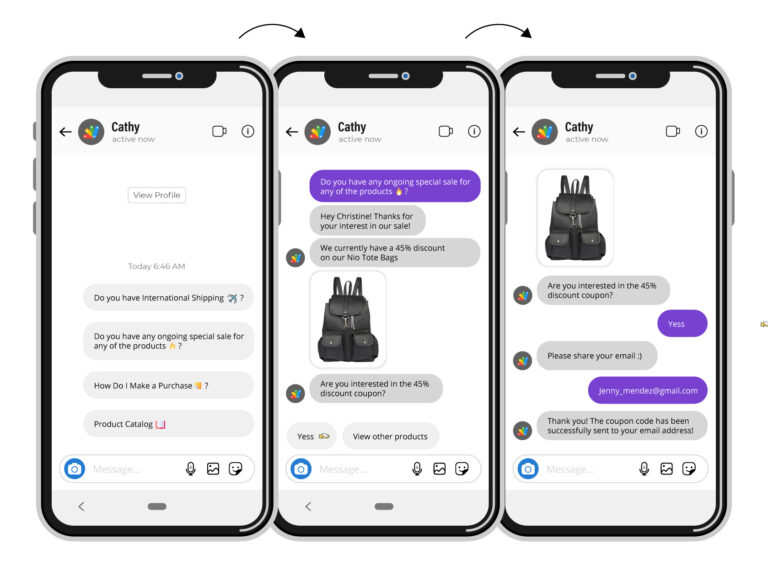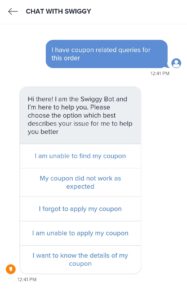Since this blog is about chatbot best practices, we thought why not start with a chatbot-related statistic we love most!
“80% of businesses are expected to have a chatbot system by 2022.”
And that’s exactly what’s happening! The chatbot adoption rate is super-high and businesses are using chatbots for a number of reasons today – customer support, lead generation & engagement, onboarding sessions, appointment scheduling and more!
Anyways, you should have known this already – probably more than we think. And you’re just here to know the best practices for chatbots. That’s great! Because this read is exactly about that!
We’ve covered 9 chatbot best practices here that’ll help you make the chatbot implementation process a breeze! Also, we’ll take you through a couple of best practices that’ll make your chatbot engagement and chatbot design more pleasing.
That said, let’s get started!
Best Practices for Chatbots
1. Set Clear Goals & Expectations for Your Chatbot
The first and foremost thing is setting a chatbot goal! Only when you have a clear picture of why you need a chatbot, you’ll be able to set goals and expectations for your chatbot.
Like we already mentioned before, a chatbot can do a lot of things – customer support, scheduling meetings, lead generation and more. But the question is, “Which area of your business needs a chatbot the most?”
Here are a few areas for you to explore and consider,
- Customer Support – Slow response times, low customer satisfaction, poor agent performance, no self-serve approach
- Issues In Sales – Slow or inaccurate lead generation process, complex customer demo session scheduling, low website conversion
- Issues In Marketing – Customers’ lack of knowledge about offers, depleting website engagement factor, high cost of conversion, etc.
Above-mentioned are some of the most common issues a business might encounter today. And the ones that a chatbot can solve!
Remember, not having a set of goals or having the wrong set of goals makes all the effort that you’ve put into your chatbot go in vain.
2. Integrate Chatbots Where Your Customers Are
This is pretty straightforward, you need to decide if you will be using your chatbot on a specific channel or multiple channels.
Let’s say your target audience is most active on Instagram, then you should focus your support on Instagram and deploy a chatbot. Some Chatbots can also help you with lead generation, like SimplyBot.
Many brands run campaigns and contests specifically on Instagram. In these instances the chatbot can be designed to help customers with questions about that specific Instagram campaign.
However, if you need a chatbot on most of your digital touchpoints, use an omnichannel chatbot that can manage all the interaction across all channels from one unified inbox.
Focus on deploying a chatbot on the channels your customers reach out for support the most. This way you can relieve your agents of simple FAQs or repetitive questions and help them focus on more complex issues.
Deploying a chatbot on your website or App is also a smart way to help your customer through their entire journey! They can reach out at any point, right from when they are looking for a certain product to when they have a shipping query or even when they reach the checkout.
3. Work On the Tone of Your Chatbot
Your chatbot is an extension of your brand. It is representative and unlike human representatives, your chatbot’s complete personality and tone should be designed to perfectly match your brand.
Regardless of the type of chatbot you use, whether it’s a standard flow-based chatbot or a conversational AI chatbot, the tone must be inclined to be more human-like.
You can do this by sifting through past conversations between your best-performing agents and customers. This can help you understand the pattern that needs to be mimicked.
If you have deployed a flow-based chatbot, review all the conversations to understand if your brand voice is coming through.
With conversational AI this isn’t much of a concern. Since it uses Natural Language Processing (NLP) and Machine Learning (ML), the chatbot can learn constantly with the queries it gets and become smarter over a period of time.
4. Give Personality to Your Chatbot
Think of it like your brand coming to life!
How would you want your chatbot to be? A cool funky one? Or neutral and formal? Friendly and sophisticated, maybe? The list is endless!
When you are building your chatbot, keep in mind the primary target audience it’s going to interact with. Develop its speech according to that audience. Not only should your chatbot reflect your brand’s personality but also resonate with your customers’ personalities.
This is one of the best practices for chatbot development that’s often overlooked even though it’s a pretty important one!
If your chatbot is effective and entertaining, you can bet your customers would much rather interact with your businesses over any other.
Siri isn’t a chatbot, but it is AI and one of the best. And you know why? It’s because Siri is entertaining and hilarious, giving Apple an edge over anyone else.
Customers no longer want a super formal interaction, that would create a gap.
Informal does not equate to disrespect. You can be friendly and familiar as long as the customer feels like their request is being taken seriously.
Another great way to make the conversation engaging for customers is by using gifs and images – it just makes the conversation more light-hearted and pleasing.
5. The First Message Matters – Chatbot Greetings
The initial few introductory messages your chatbot sends will be the first thing your customers see and you know what they say about first impressions.
It’s an invitation to your customer to start a conversation and ask questions.
Especially on your website, it’s a great way to guide customers during their shopping journey. It lets them know that they have assistance for any questions and issues online just like in your physical store.
And in this case, you don’t need to pretend like it’s a human agent, you can make it clear that it’s a chatbot.
6. Make the Conversation With Your Chatbot a Breeze
Despite the fact that chatbots are incredibly complex internally and process more data than imaginable, your chatbot should provide the most convenient and seamless experience.
There is a perception amongst customers that chatbots are harder to use. In fact a recent research found that 60% of customers answered that they would prefer to wait in a queue if it meant they could immediately speak with a human agent.
But take Swiggy for example, their in-app customer service has become incredibly smooth and easy to use. Customers no longer think twice before raising an issue.
Swiggy’s chatbot UX has improved significantly since they first launched it, and you know why? Because they know it’s a trial and error process.
Make your chatbot user-friendly – keep the answers short, effective and use simple words. Customers don’t want to read through to find directions or answers to their questions.
7. Chatbots Aren’t Successful – Always
Chatbots can occasionally not have the right answer, or sometimes they may not be able to understand the customer to successfully answer their question. It could be due to typos or complicated phrasing and that’s ok!
Just ensure your chatbot has an agent fallback. In these cases, human intervention is the best way to solve the issue without annoying the customer or keeping them waiting too long.
And if you are worried about conversation history, use an omnichannel platform with seamless escalation and complete contextual history of the conversation.
There’s alway room for improvement in any aspect of a business, so of-course there’ll be situations where your chatbot needs to improve.
The best way to target this is by using Machine Learning and NLP. Once deployed your chatbot can learn on its own and gets better with each conversation, so you don’t need to manually improve it every-time.
Chatbots make mistakes and the way to avoid it is by being aware of how they can go wrong, read our blog on chatbot fails and learn how you can avoid them!
👉 Chatbot Fails – 5 Reasons Why Chatbots Fail and How to Avoid Them
8. Collect Real-Time Customer Feedback
Asking customers for feedback is probably one of the most important chatbot best-practices. Since its customers who will be interacting with your chatbot, why not ask them how you can improve?
And it shows them you care about their experience with your chatbot enough to want to make it as perfect as possible.
The purpose of your chatbot, just like human agents, is also to convert people into loyal customers. So asking for feedback is the best way to understand what key improvements are needed to improve conversion rates.
By asking your customers for feedback you’ll be surprised how much useful information you can gather and what all you’ve missed.
9. Measure Your Chatbot Performance to Improve Constantly
We’re down to the last chatbot best practices in our read! Let’s look at it!
Once your chatbot is in full swing, it’s time to understand how it’s performing.
With an intuitive customer support platform you can track the performance of your chatbot in real-time. Measure how your chatbot performs when the volume of tickets are high, and monitor the quality of the conversation.
Another KPI to measure is rate of resolution, especially when the volume is at a peak. If your chatbot has a low rate of resolution, it’s a sign that there may be a backend issue or that customers are simply abandoning the conversations. The latter is a significant issue you need to address immediately.
Reviewing conversations will also help you understand the areas your customers tend to need support in. It helps you gain a better understanding of your users.
Analysing Customer conversations will also help you understand the scenarios and questions your chatbot was unable to resolve.
This may be as simple as helping your chatbot understand typos and different ways of phrasing one question. You can also identify if you need to include more languages.
Conclusion
Chatbots have a lot to offer. And following these chatbot best practices are the first step to optimizing them to their full potential. Once you implement a chatbot into your customer service processes you’ll learn exactly how to take things forward, the important thing is to keep learning and focusing on improving.



